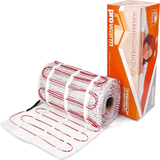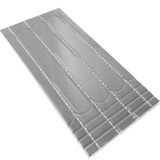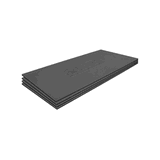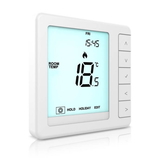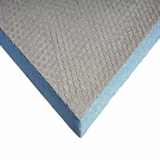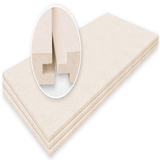- Blogs
- Underfloor Insulation - A Brief Guide
Underfloor Insulation - A Brief Guide

Underfloor insulation is one of the most effective ways to reduce or restrict nearly ten percent heat loss through the floor. If you’re considering adding underfloor insulation to your new or existing floor, here is an article that can help you discover the benefits, costs and other information on underfloor insulation.
In this article, you’ll learn about the different types of underfloor insulation available, their cost, and also about their soundproofing properties. If you’re interested in making your new floor a little quieter, you may want to consider a vapour barrier as well.
Adding UnderfloOr Insulation To A New Or Existing Floor
Underfloor insulation is a great way to keep your floor warm and cosy. You can use underfloor heating or foam insulation boards to insulate under floors. Usually, expanded polystyrene and extruded polystyrene are considered best for underfloor insulation.
Polystyrene foam insulation boards are readily available, both locally and through online insulation suppliers and can be installed with little or no mess. You can follow the instructions on the package and can even inst all it yourself if you are a competent DIYer.
all it yourself if you are a competent DIYer.
Underfloor insulation is placed beneath a new or existing floor. It is installed by creating a crawlspace under the floor and removing any existing flooring.
In some cases, foam or mineral wool insulation can also be used. It is essential to follow the building regulations to ensure the new insulation doesn’t affect any structural elements or interfere with ventilation.
Underfloor insulation is not only an excellent way to make your home more comfortable, but it’s also an energy-efficient home improvement. It eliminates drafts in homes with raised floors and uses less energy to maintain the desired temperature.
Adding underfloor insulation to a new floor can be an inexpensive way to improve the energy efficiency of your house. It helps keep your home cooler in the summer and warmer in winter and prevents air draughts. Adding this insulation will make your home more comfortable year-round and decrease your need for artificial heating and cooling.
Costs Of Installing Underfloor Insulation
There are many factors to consider when calculating the cost of installing underfloor insulation. The material used, the amount of space between the floor joists and ease of access all play an important role in the cost of installing insulation.
Depending on the type of insulation you choose and the type of house you live in, you can expect to pay anywhere from £510 to £2000. Some common materials for underfloor insulation include polyurethane spray foam, polyester batts, mineral wool batts or insulation slabs like RWA45, RS45 and others.
Before hiring a contractor to install your new insulation, it’s important to have a good idea of the overall cost. This cost should include materials as well as the time of a professional contractor.
Look for contractors who can give you detailed quotes based on the amount of space you wish to cover and the type of material you want to use. Also, be sure to ask the contractor about any warranties they offer. Some companies will offer a lifetime guarantee to cover any defects in the work.
The cost of underfloor insulation varies depending on the K-value of the material and the U-value you want to achieve. It also depends on the climate zone you are located in.
There are some main types of underfloor insulation materials. There are Polystyrene insulation, PIR Insulation, spray foam insulation and so on. Each type has its pros and cons. Expanded polystyrene insulation boards are cheaper compared to extruded polystyrene of PIR insulation, but have a higher K-value.
If you need to save space, you may want to use XPS. While extruded polystyrene costs slightly more per square foot, it has a better K-value compared to EPS insulation boards. Spary foam insulation is probably costlier compared to the rest.
Underfloor insulation can greatly improve the energy efficiency of your home. It also adds an additional layer of protection to your crawlspace. You can install it yourself or hire a contractor.
The cost of underfloor insulation will be easily recouped in a couple of years as it increases savings, both in terms of energy and money. The floor insulation will pay for itself many times over in the long run.
Sound Insulation Properties Of Underfloor Insulation
Underfloor insulation can be a great option if you want to reduce noise in your home. These materials block out sound from floors and underfloor ducts, as well as the space between the floor joists. Although most insulation products offer some sound insulation, thicker materials will provide better soundproofing.
The first thing you should do is determine the type of noise you’re experiencing. You’ll probably be able to identify the noise level by measuring the sound that comes into the room. If it is particularly loud, you can choose a floor with thick acoustic foam, which can absorb more sound. This material can reduce airborne noise, as well.
Underfloor insulation products are available in a variety of forms, including bulk insulation and reflective foil. A combination of both can be used to create a seamless, insulated barrier between the floor and UFH pipes. Many products also have acoustic properties that make them excellent options for sound reduction in domestic buildings.
Acoustic insulation products are rated by the Weighted Sound Reduction Index or WSRI. A higher Rw rating indicates better acoustic insulation. A high Rw rating will help reduce noise by as much as one decibel. There are two main types of underfloor insulation: medium-density and low-density.
Underfloor insulation is important for improving the sound quality in homes. Soundproofing is an important consideration in both new builds and renovations. Whether you need sound insulation for a home theatre or a small apartment, there’s a suitable product for your needs. Consider the size of the floor and the number of rooms in your building.
Underfloor insulation isn’t difficult to install. Just be sure to use the correct type of material. The underfloor insulation material needs to be protected from moisture and wind washing. It must also be airtight. Otherwise, it can lose its effectiveness. You should also consider the type of insulation and the barrier products.
Underfloor insulation also helps improve the thermal efficiency of a home by reducing airborne noise. As a result, you’ll be able to reduce your heating and cooling costs.
In Conclusion:
Underfloor insulation is one of the best ways to ensure that heat or warm air is not lost through floors. It makes your home energy efficient and helps improve your EPC ratings.
For top-quality extruded and expanded polystyrene insulation boards, visit Buy Insulation Online. We also stock loft insulation rolls, multifoil insulation, breather membranes and acoustic insulation batts and rolls at a low cost. With us, you will also find specialist insulation products like valve jackets, ductwrap, pipe lagging and so on.

Samuel Hitch
Managing Director
Buy Insulation Online.
Leave A Reply
Your feedback is greatly appreciated, please comment on our content below. Your email address will not be published. Required fields are marked *




